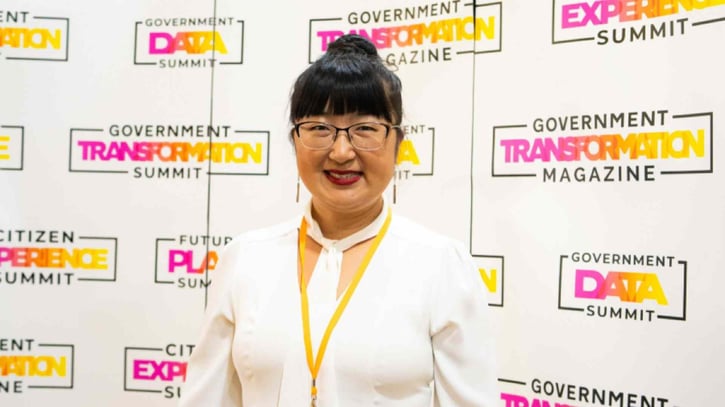How Canada is creating more inclusive public services
Creating inclusive public services that are accessible and benefit all citizens requires inclusive and human-centric design. But how can governments ensure that their services are fit for purpose and address the very diverse needs of the different communities and individuals they serve?
Government Transformation Magazine asked Xiaopu Fung, Director of Product and Service Delivery at Employment and Social Development Canada, about how her department is addressing these challenges and working towards more inclusive public services in Canada.

What is a frequent challenge to building better services?
I think it's usually around very senior individuals who think they know the problem and immediately jump to a solution. The mandate then ends up being very prescriptive and doesn’t leave room for staff to think outside of the box.
To understand the problem, we must ensure that we are not making assumptions or basing our ideas on personal opinions so that the staff who are responsible to deliver on this mandate have the space to explore the problem in more detail and come up with creative solutions.
How can we make digital services more inclusive?
In order to have inclusive services, you need to turn the lense internally and look critically at your staff diversity first. If your team is not diverse, there will be more blind spots than if you started with a diverse team. This is because you're going to make many assumptions - assumptions that you are not even aware of because they've become truths for you.
Diversity inside out. We have to look at ourselves first; start with diversity inside the team, then look outwards to build an even more inclusive lense.
Very often, I find there's a cookie-cutter mould of who goes into public service, usually from similar socioeconomic backgrounds. As a result, you have a lot of groupthink happening without even realising it. You might go on to identify problems and solutions, but your blinders are on because you are looking at the problem from a biased lens, and you are likely missing out on a whole slew of other problems.
If we can start out with a more diverse public service, then at least you have an appreciation for the different backgrounds and the different lived experiences that give you a more inclusive lens. Then, as you plan the research, do it in an inclusive manner by tapping into community groups and networks to build a more fulsome understanding of the population you serve.
How does your team engage with citizens to understand their needs?
Depending on where in the service design lifecycle we are at, either the problem space or the solution space, we would be doing different things. When we are looking at the problem space, trying to understand the problem better, we try hard to reach more of the marginalised communities to deepen our understanding of their challenges. We rely on our administrative information, front-life staff and community groups to reach people from marginalised communities. We also look at existing data to surface any insights before reaching out to individuals so that we are not wasting their time.
When we are looking at the solution space, we attempt to co-design but if we are not able to, then we try to incorporate learnings from our research to identify solutions. We then test the solutions and iterate on the design based on feedback from the primary user.
What tools and methods do you use to understand how users interact with your services?
Our first step is always interviews because we are trying to identify what we don't know. Although there's already data, reports and customer feedback that gives us a general sense of some of the problems we are addressing, we want to talk to people and have a conversation to understand their lived experiences from a qualitative perspective.
Once we are showing them a solution, that's when we do usability testing. Our usability tests are task driven. But among those tasks, we might ask a few interview questions as well, so it's more of a hybrid model.
Do inclusive teams build inclusive services?
Ideally, you start with diverse staff, but if you’re not in that situation, that’s okay. Work with HR to address that issue. But the sooner you can build an inclusive lense, the better. So talk to the diverse set of people you are serving. Reach out to the populations not represented within your staff complement. Identify those blind spots and pursue them to further you understanding of the real problems people are facing.
What are your top tips for public sector organisations that want to ensure their services are truly inclusive?
My recommendation is around compensation or ethical research. I think in government we may shy away from the idea of compensating a user for their time because we think, ‘we are delivering public services and we are trying to help you’. The problem is that people who can actually offer their time for free are amongst the most privileged set of people. We really do need a user compensation policy to pay people for their time. This way, we’re not biased towards the citizens who can give us their time for free.
When will do you expect user design to be inclusive by default?
I think we still have a long way to go. In Canada specifically, we're just starting to embark on our reconciliation journey with our Indigenous peoples. It's hard because there’s a lot of past and current trauma, a lot of bad will and there are no easy fixes.
We've been doing a bad job of servicing our Indigenous peoples - the access is not always there and the trust that was lost takes a long time to build back. We have to be mindful of the lived experiences and we are only at the beginning of our long learning journey.
Also Read
- NHS unveils redesigned homepage to meet evolving digital health needs
- Transforming citizen experience: Innovation, strategy and collaboration in public services
- Reforming planning technology: the key to unlocking growth
- Canada sets out 'Digital Ambition' with focus on smarter, secure, and citizen-centric services




